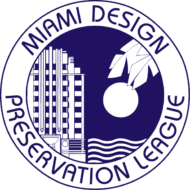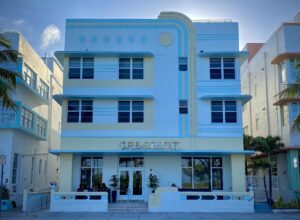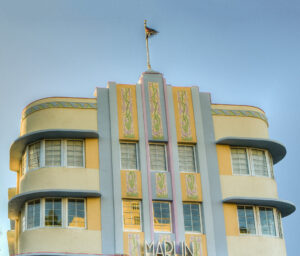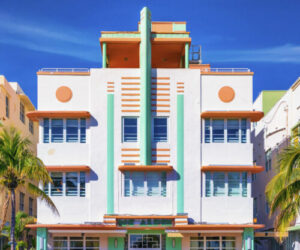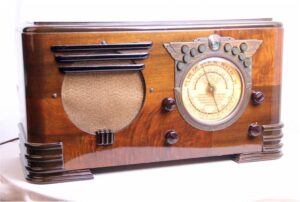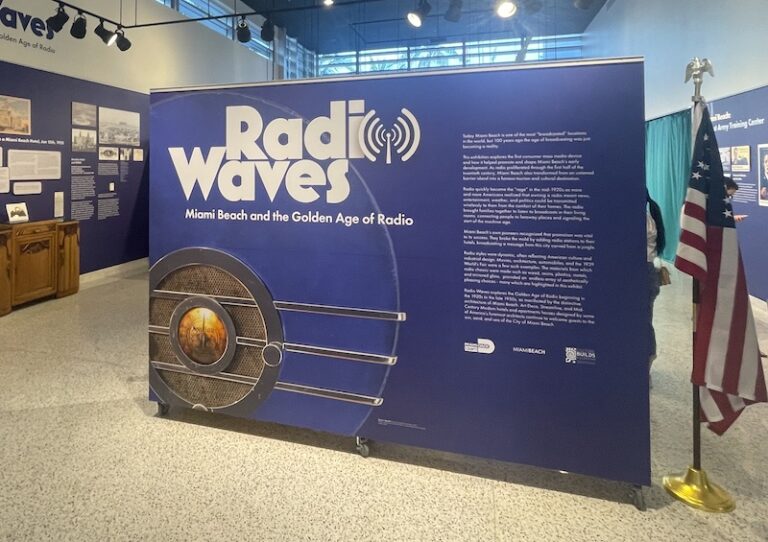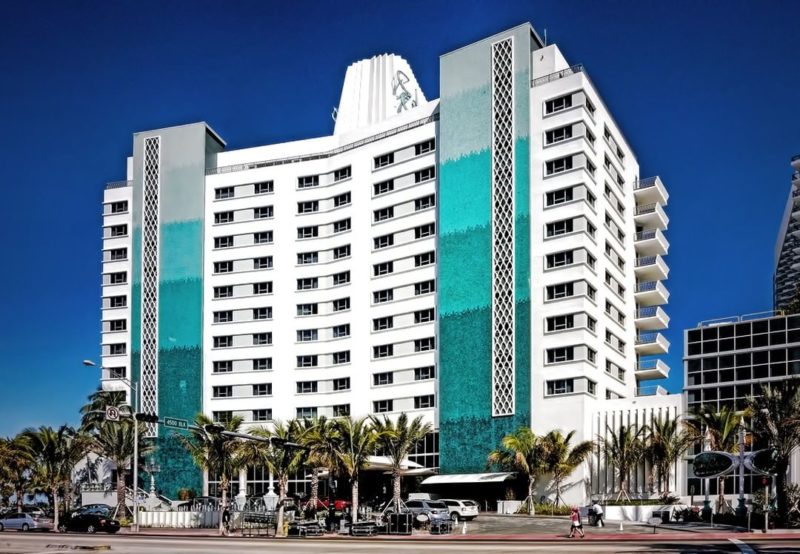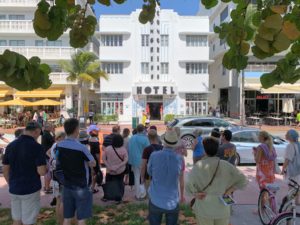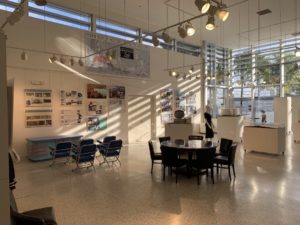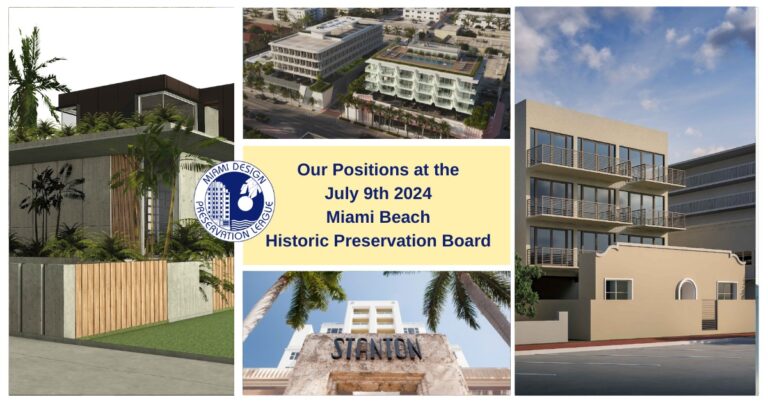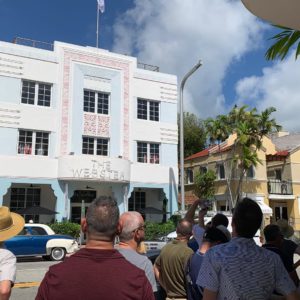
Editor’s Note: A version of this article originally appeared in the program guide for Art Deco Weekend 2023
As we enter the winter season and celebrate Miami Beach’s arts and culture scene, we’re teleporting back to the earliest days of the city.
Before there was an Art Deco District, there was the untamed island of what was soon to be Miami Beach.
It has been nearly 100 years since the earliest radio towers and stations set foot in Miami. And the city as we know it today couldn’t have blossomed without the Golden Age of Radio.
MDPL’s latest exhibition Radio Waves: Miami Beach and the Golden Age of Radio, at the Art Deco Museum, dives into a time when Miami Beach was growing and expanding by the minute thanks to the new technology, which was quickly taking over the U.S. and abroad.
In 1915, Miami Beach was a brand new city carved out of a jungle. Years prior, the Marconi Brothers had erected radio towers on the island as the first broadcast medium took over communications.
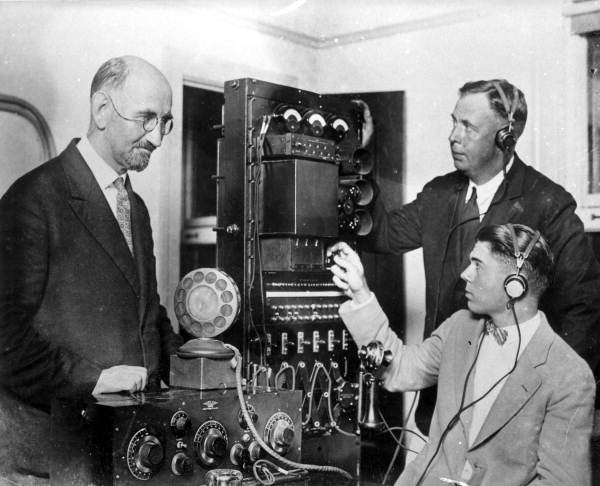
These new changes signaled the start of the machine age, as never before had cities been able to connect and reach each other in such a way.
Radio paid a key role in promoting Miami Beach as an attractive winter destination. The city’s pioneers, like Carl Fisher, John Collins, and the Lummus Brothers were all passionate about bringing new life to the city through tourism and new developments, including radio. This emphasis on innovation, culture, and transport made Miami Beach the World’s Winter Playland.
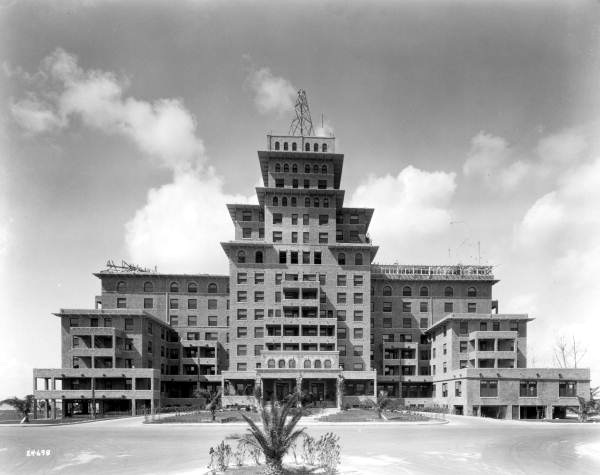
And just like radios became a staple for cars and homes, they became a staple in Miami Beach’s hotels. In fact, one of the city’s former hotels is the site of its first-ever commercial radio station.
The Fleetwood Hotel (1924, Frank V. Newell) opened in January 1925, also debuting the brand new WMBF (Wonderful Miami Beach Florida). At 15 stories, it was the tallest building in the state at the time, and you could spot its antenna from its tallest roof.
Later, in 1926, the Nautilus Hotel (1924, Leonard Schultze and S. Fullerton Weaver), built by Carl G. Fisher, also began broadcasting from its own station, WIOD (Wonderful Isle of Dreams).
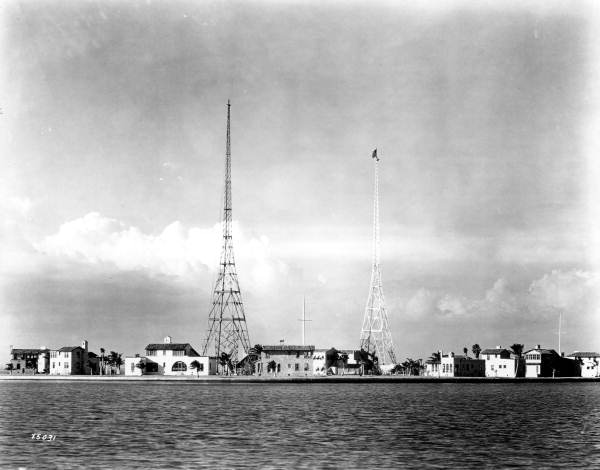
Towers of radio station WIOD (Florida Memory) 
Early transmitter site for WIOD (worldradiohistory.com) 
WIOD Radio transmitter building, Miami Beach, Florida. Exterior II (from Library of Congress) 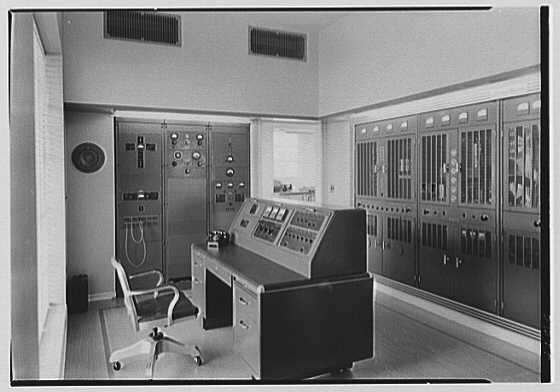
WIOD Radio transmitter building, Miami Beach, Florida. Interior (from Library of Congress) 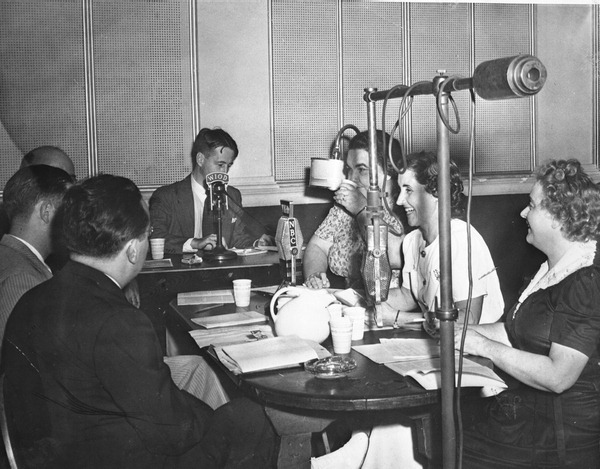
WIOD interfaith panel discussion (Florida Memory) 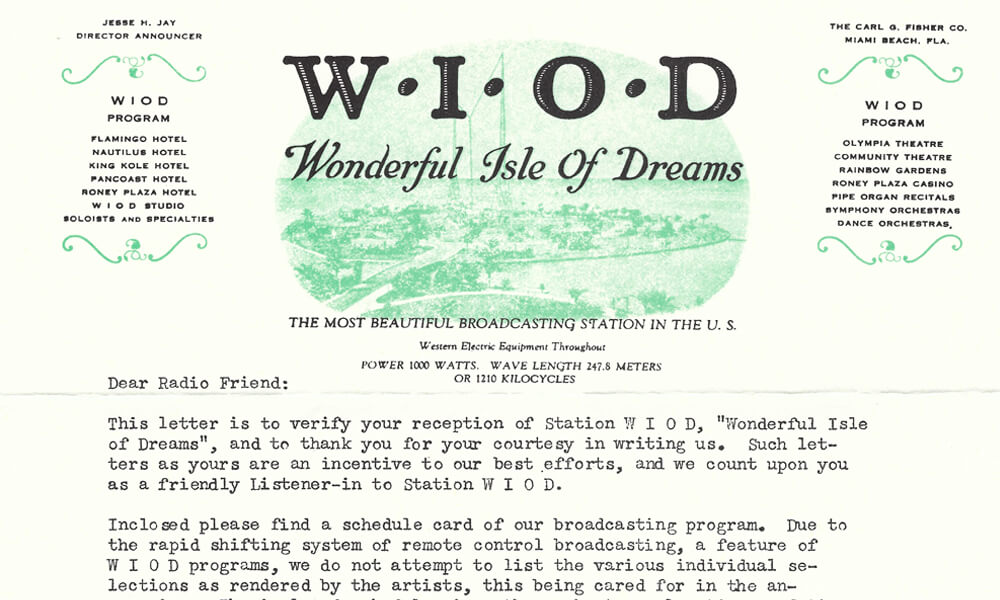
WIOD letter (source Marlin R. Taylor) 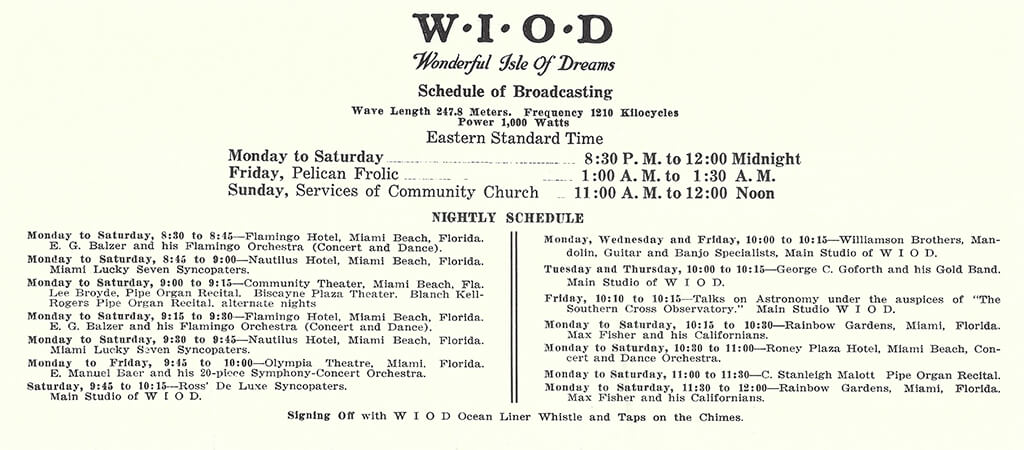
WIOD programming schedule (source Marlin R. Taylor) 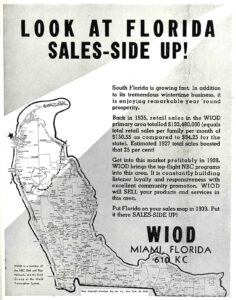
WIOD print advertisement (Marlin R. Taylor) 
WIOD reception brochure (Marlin R. Taylor) 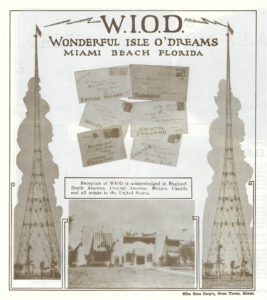
WIOD reception brochure (Marlin R. Taylor) 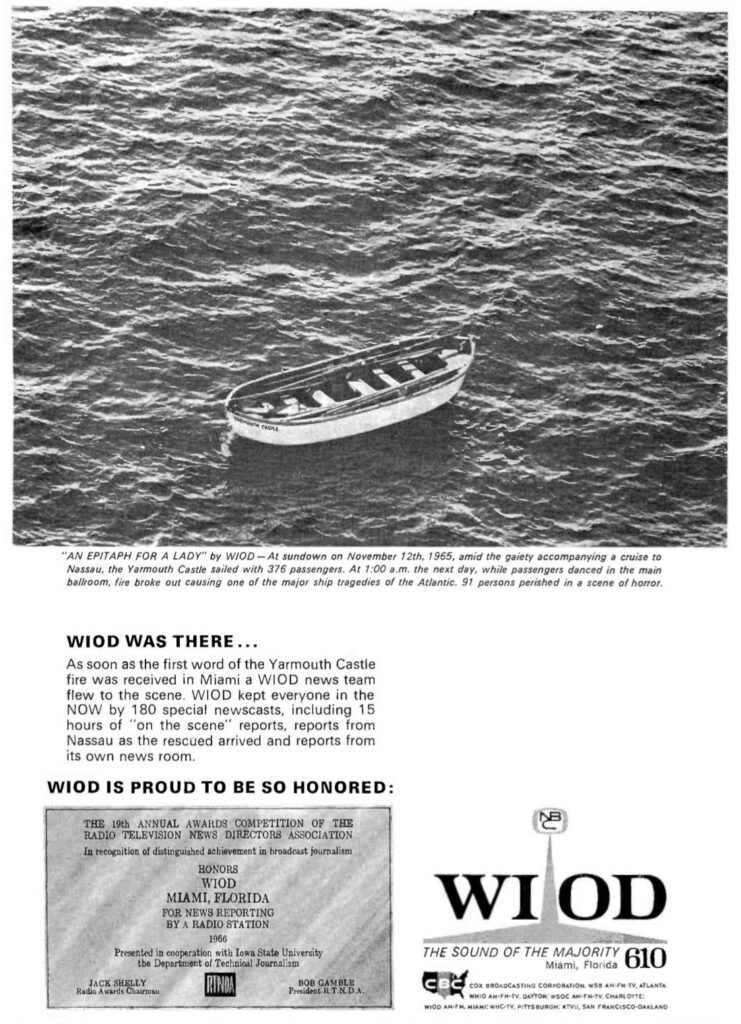
WIOD print ad (source: Faded Signals) 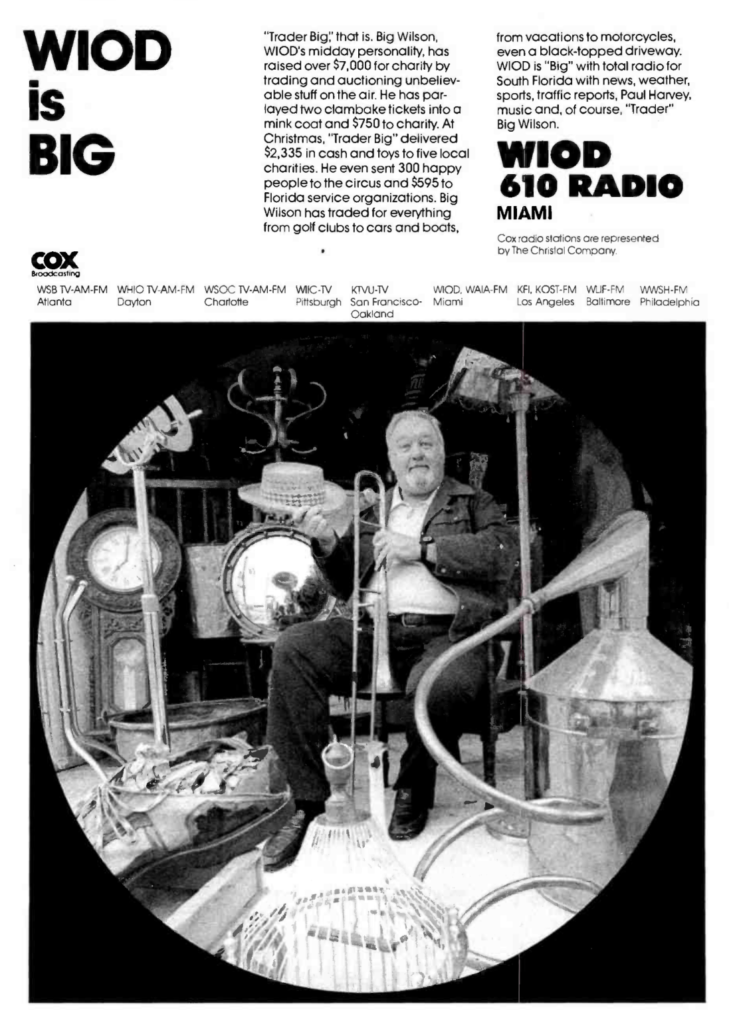
WIOD ad (source: Faded Signals) 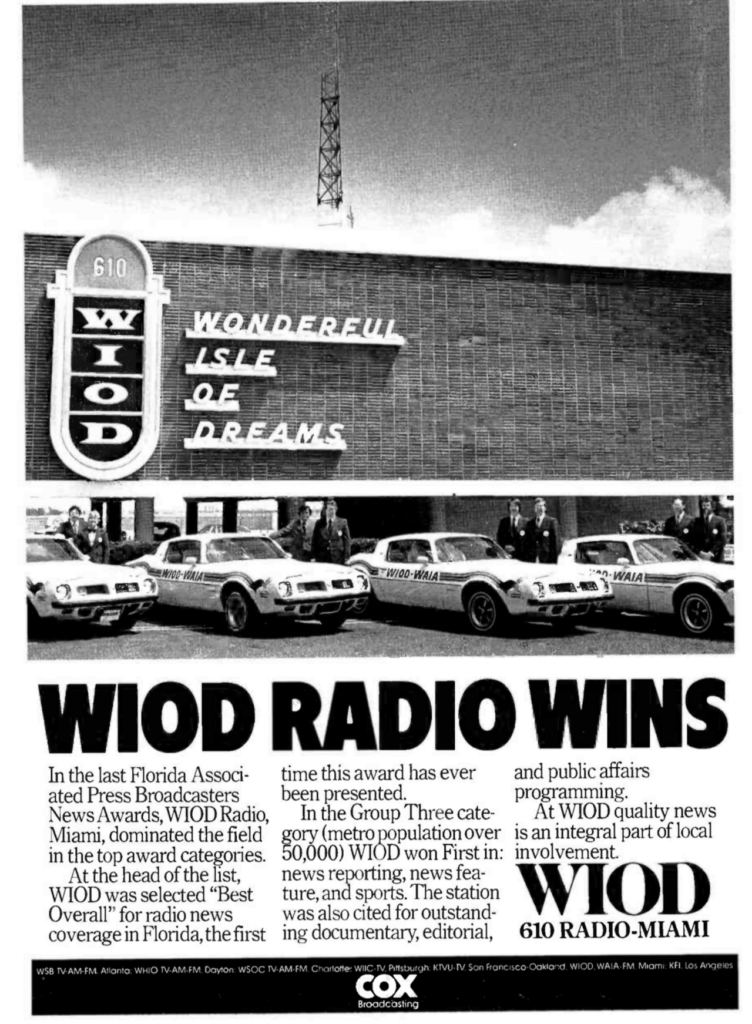
WIOD ad (source: Faded Signals)
Radio enhanced and supported new waves of development, entertainment, and tourism in Miami Beach. Suddenly, listeners statewide – including prospective homeowners and tourists – could tune in and picture the sunny escape to the beach
Miami’s earliest radio stations were representative of its beautiful sunshine and unique culture, helping many of its diverse communities find their voice and space within the city.
For example, Jack “The Rapper” one of the earliest prominent black DJs, who founded the first Black-owned station in Atlanta, also worked in Miami throughout the civil rights movement. Similarly, WKAT, a Jewish radio station founded by former Miami Beach mayor Frank Katzetine hosted “The Jewish Hour” show, which nurtured the local Jewish community.
Radio became essential to wartime communications and news, and by 1941, 90% of households had purchased radios for family entertainment.
From 1941 to 1944, The War Department used around 300 Miami Beach hotels to station soldiers. This received widespread coverage on radio and print, including a cover story in Life Magazine in 1942.
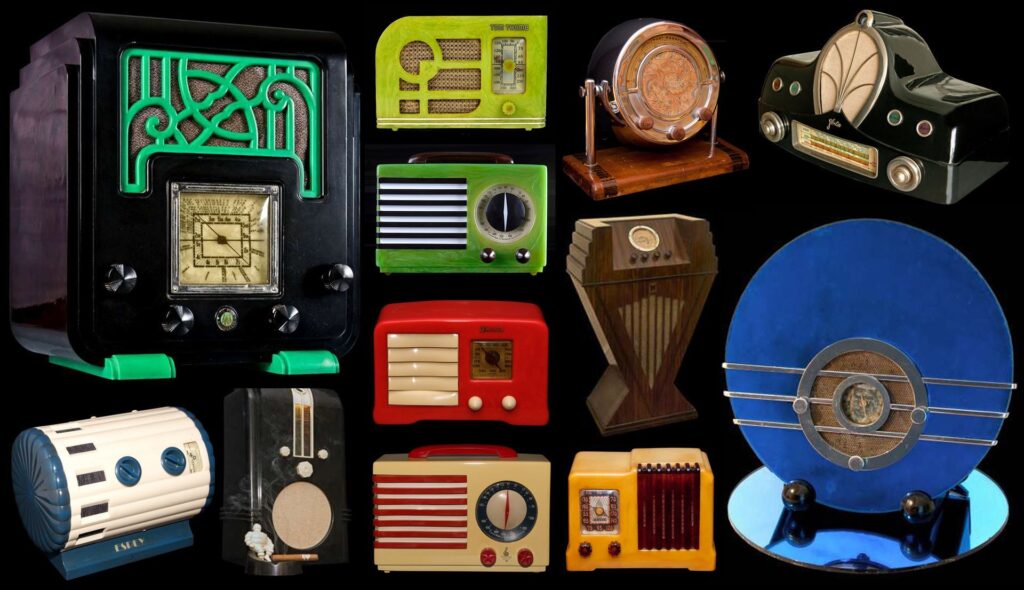
Radio also helped lure in tourists seeking the best in entertainment. Many show business notables would come to the island to perform on air, in clubs, and in its many hotels, including Frank Sinatra and Ed Sullivan.
As the world began to recover following the war in the 1950s, Art Deco and Streamline Moderne aesthetics took over art and architecture as emblems of progress and industrialization. These ideas and designs became internationally known as world fairs were showing off new inventions and designs for tomorrow.
Streamlining, inspired by the spirit of transport, could be spotted on radios, trains, planes, ocean liners, cars, and home appliances. Over in Miami Beach, it was incorporated into the designs of many of the buildings we know and love today.
Architects such as L. Murray Dixon and Henry Hohauser were instrumental in designing many of the buildings that make up the Miami Beach Architectural District. They were both influenced by streamlining trends like curves, towers, window eyebrows, and neon.
The new style was not just futuristic but also allowed for lower construction costs, and similarly, the radio underwent a radical transformation in its designs and aesthetic.
Physically, they upgraded from wooden, ornate family stations to sleeker, streamlined compact devices. Some of the most popular materials for Art Deco radios – which were mass-produced – included wood, synthetic plastics, resins, polymers, and acrylics.
Many of the buildings that make up the Art Deco District match radios in their sleek style, adorned flair, and signature aerodynamic, nautical streamline details.
Transistor radios, which became popular during wartime in the 1950s, also revolutionized their design, allowing listeners to carry the news with them wherever they went. By the 1960’s and ‘70s, radios had become the most popular form of electronic communication.
This more portable size of transistor radio also revolutionized how we consume popular music, sparking a new wave of devices that evolved into the boomboxes, disc players, iPods, and smartphones we rely on for news, entertainment, and more.
Today, radio is still one of the most widely-used forms of media for Americans, standing the test of time as one of the most reliable and historical forms of communication and entertainment. And just like the trademark hotels that adorn the streets of Miami Beach, it will remain one of its true cultural pillars and the reason millions get to enjoy its sea, sun, and sand year-round.
